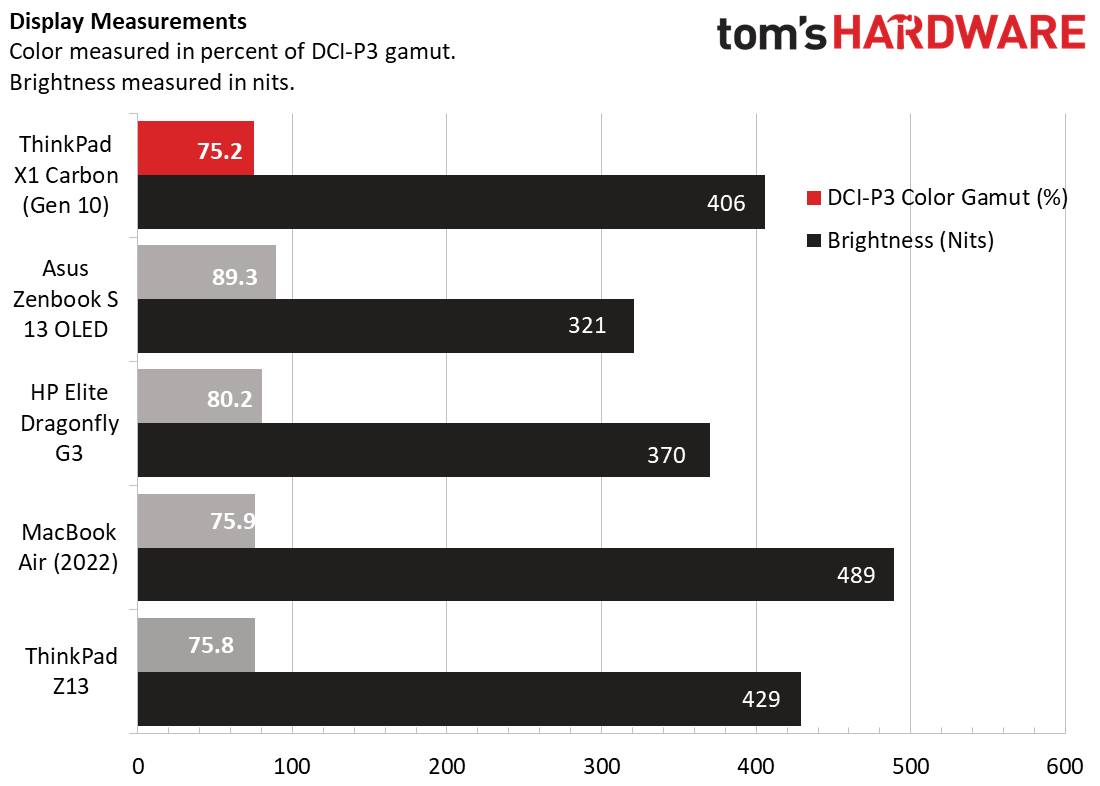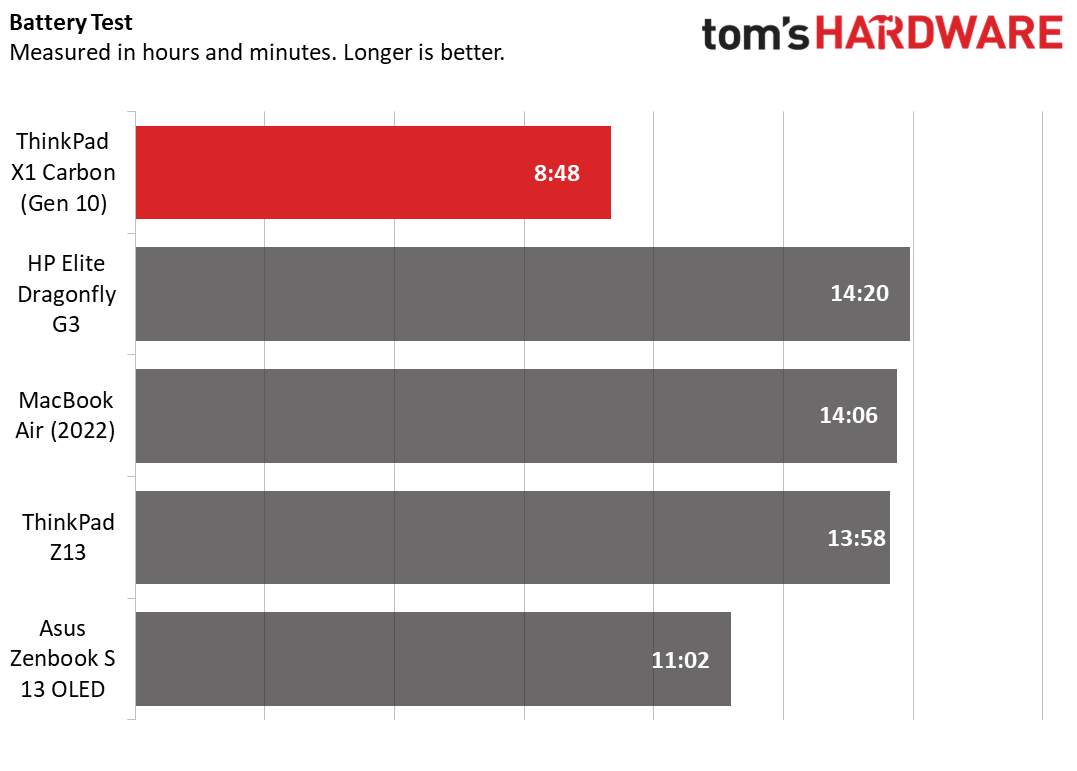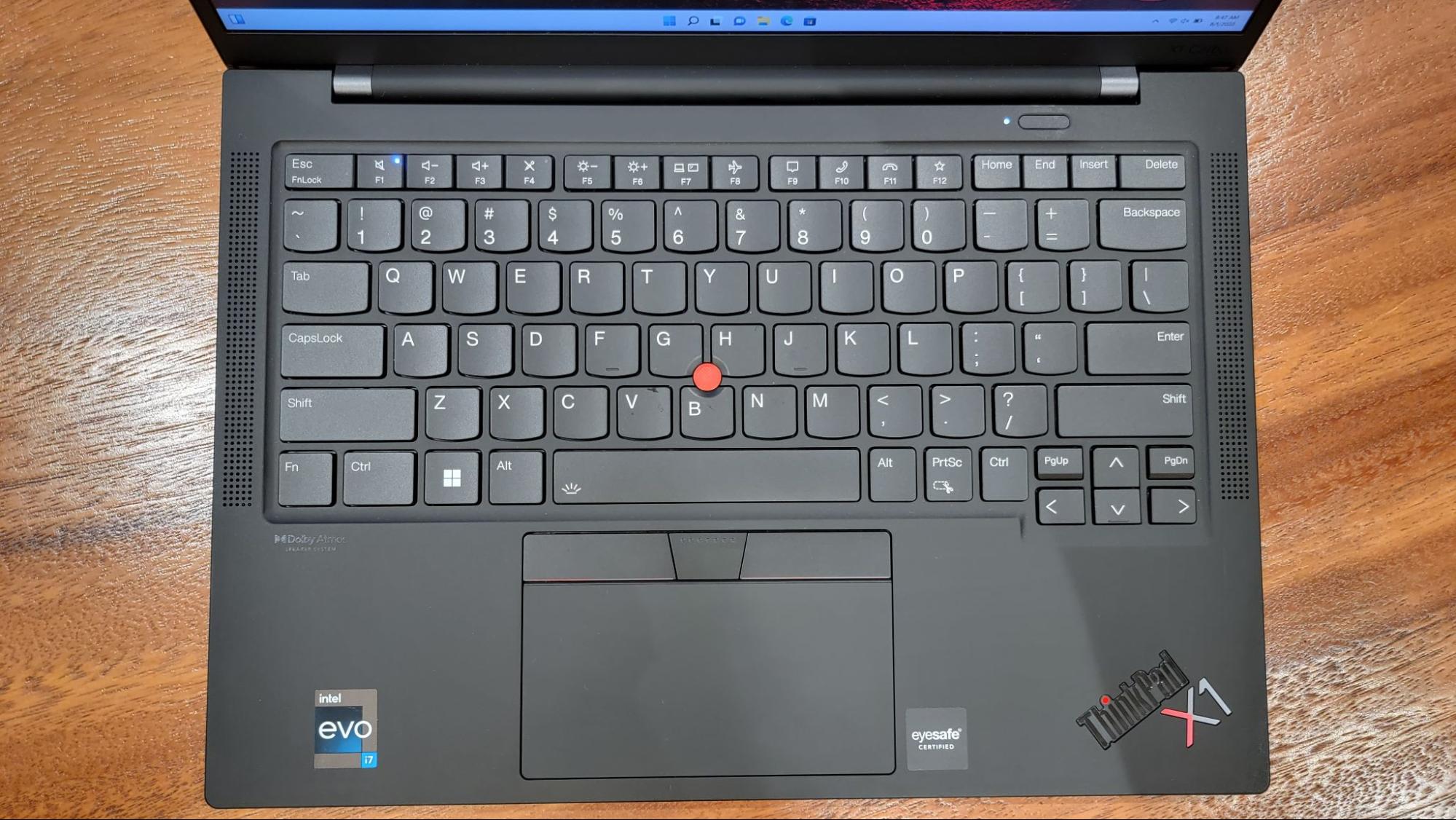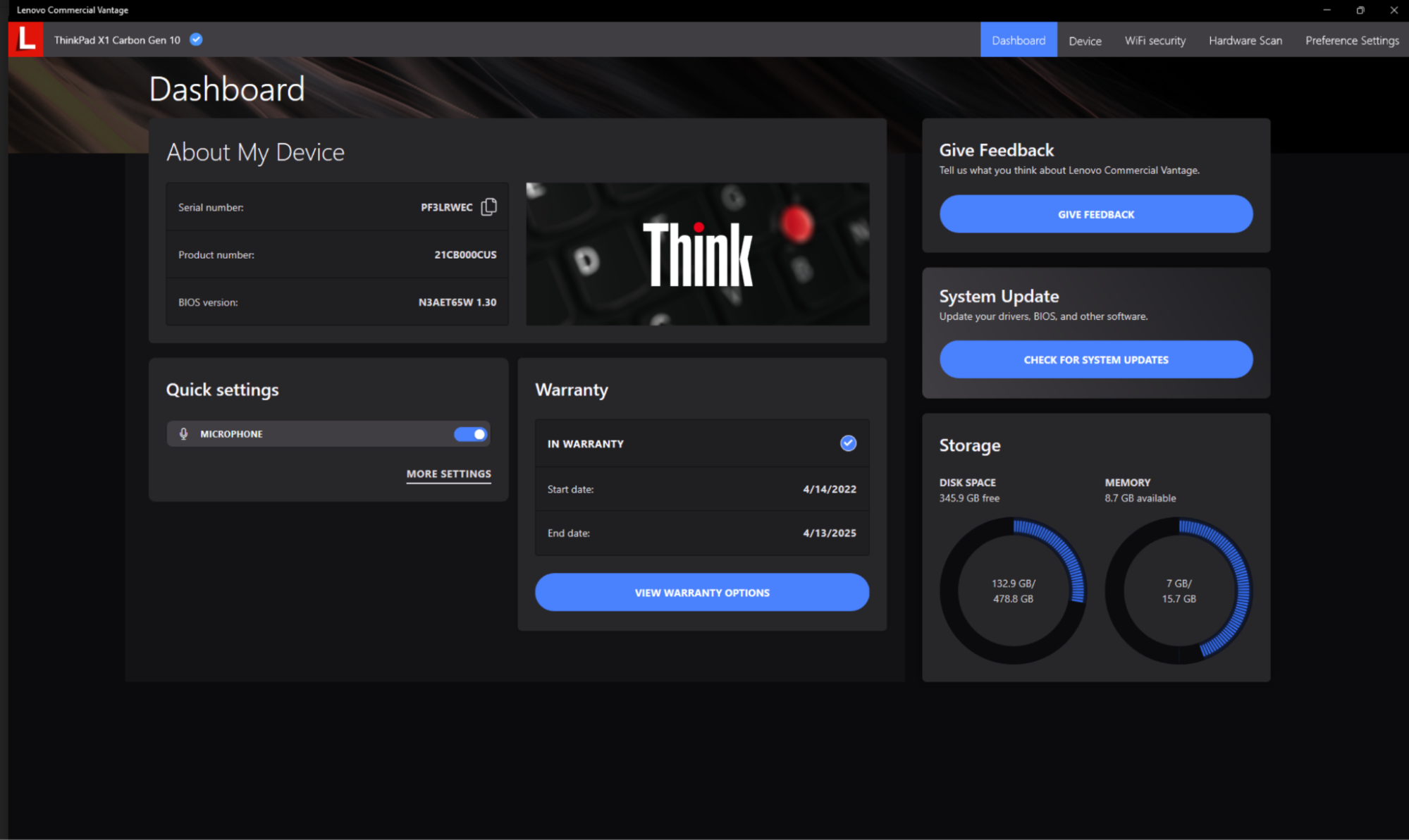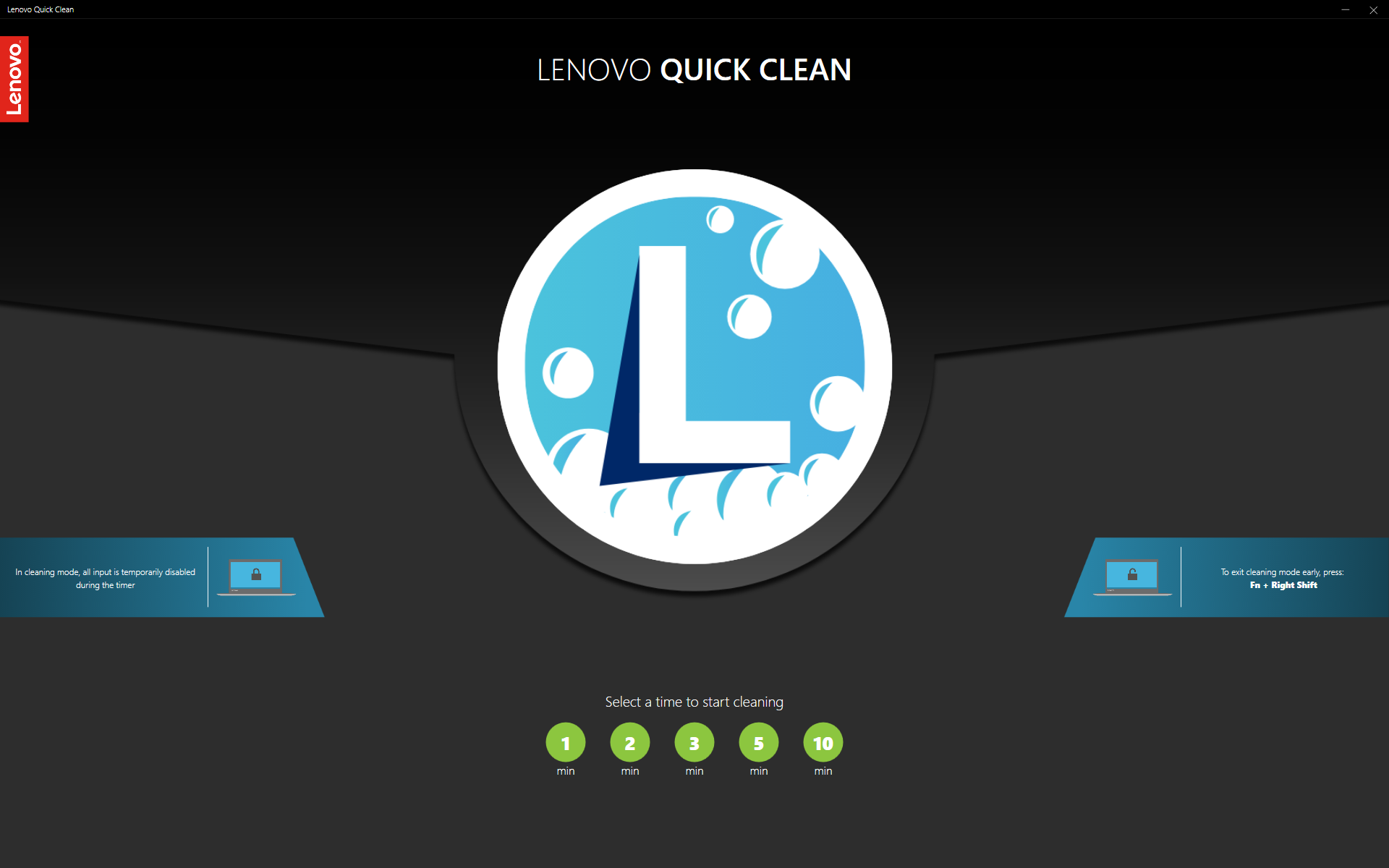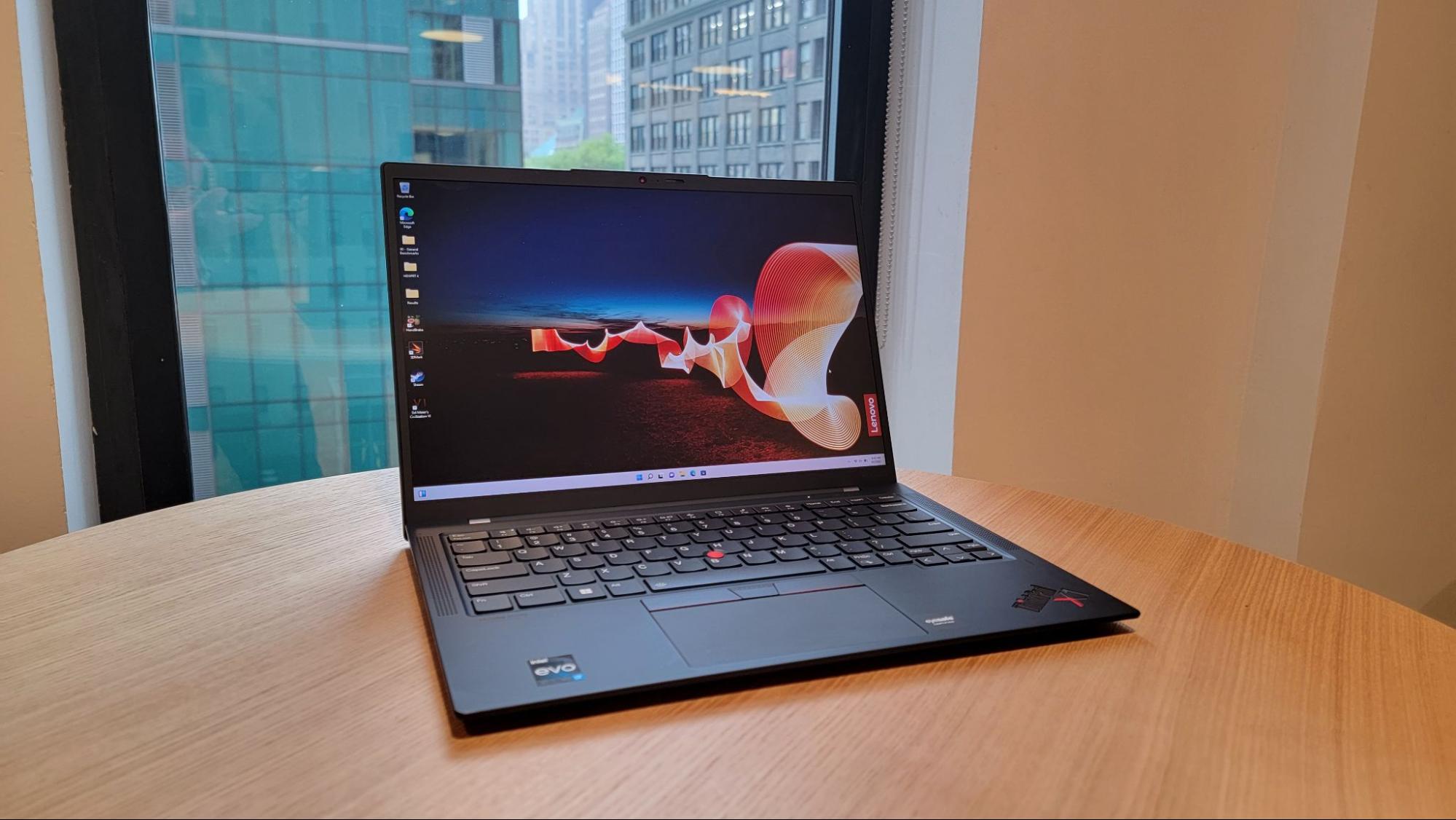Tom's Hardware Verdict
The Lenovo ThinkPad X1 Carbon (Gen 10) offers first-class usability and flexibility with a colorful display and great keyboard, but a high-wattage, P-series processor drags down battery life.
Pros
- +
Bright, colorful display
- +
Best-in-class keyboard
- +
Sharp, 1080p webcam
- +
Great mix of ports
Cons
- -
Short battery life (with P-series CPUs)
- -
Hard to upgrade
Why you can trust Tom's Hardware
Lenovo’s ThinkPad X1 Carbon line has a decade-long tradition of delivering industry-leading business laptops that usually sit among the best ultrabooks for productivity. Starting at $1,319 ($1,564 as configured), the ThinkPad X1 Carbon (Gen 10) continues this legacy with a fantastic keyboard, a bright and colorful display and solid performance all wrapped up in a lightweight package with strong build quality. It even throws in a sharp, 1080p webcam for good measure.
However, in attempting to upgrade the ThinkPad X1 Carbon’s performance for Gen 10, Lenovo has significantly harmed its battery life. The company primarily sells the Carbon with Intel’s 28-watt P-series processors rather than the 15-watt U-series CPUs it used in prior gen products. The result is a laptop that lasted less than 9 hours on our battery test, which is several hours less than both competitors and last year’s X1 Carbon. If you’re willing to compromise on endurance, however, the X1 Carbon (Gen 10) is a strong choice that will make you more productive.
Design of the Lenovo ThinkPad X1 Carbon (Gen 10)
The raven black, boxy, angular chassis of the ThinkPad X1 Carbon hasn’t changed in quite a while so if you’ve seen a prior model, you may not notice any differences. But Lenovo’s ThinkPad aesthetic is like the design of a Rolls Royce or a Jaguar — a classic look that doesn’t need to be reinvented with each product generation. As always, the black chassis has just a few splashes of vibrant red, in the form of the X1 Carbon logo, the illuminated red “i” in ThinkPad which shows the power/sleep status and the TrackPoint pointing stick which lives in the middle of the keyboard. If you want an extra dose of style, you can opt for a lid with a cross-hatch, carbon-fiber pattern.
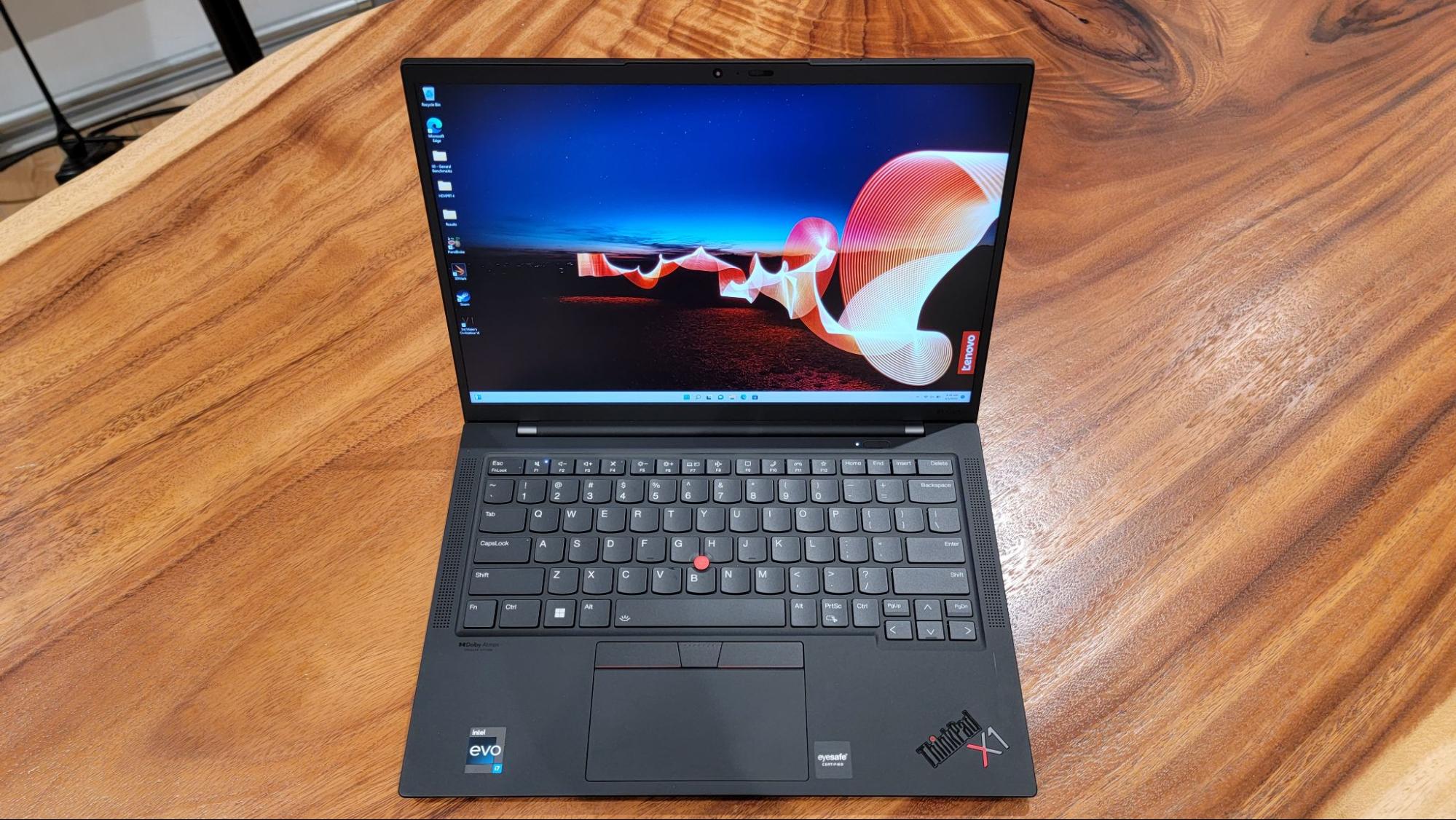
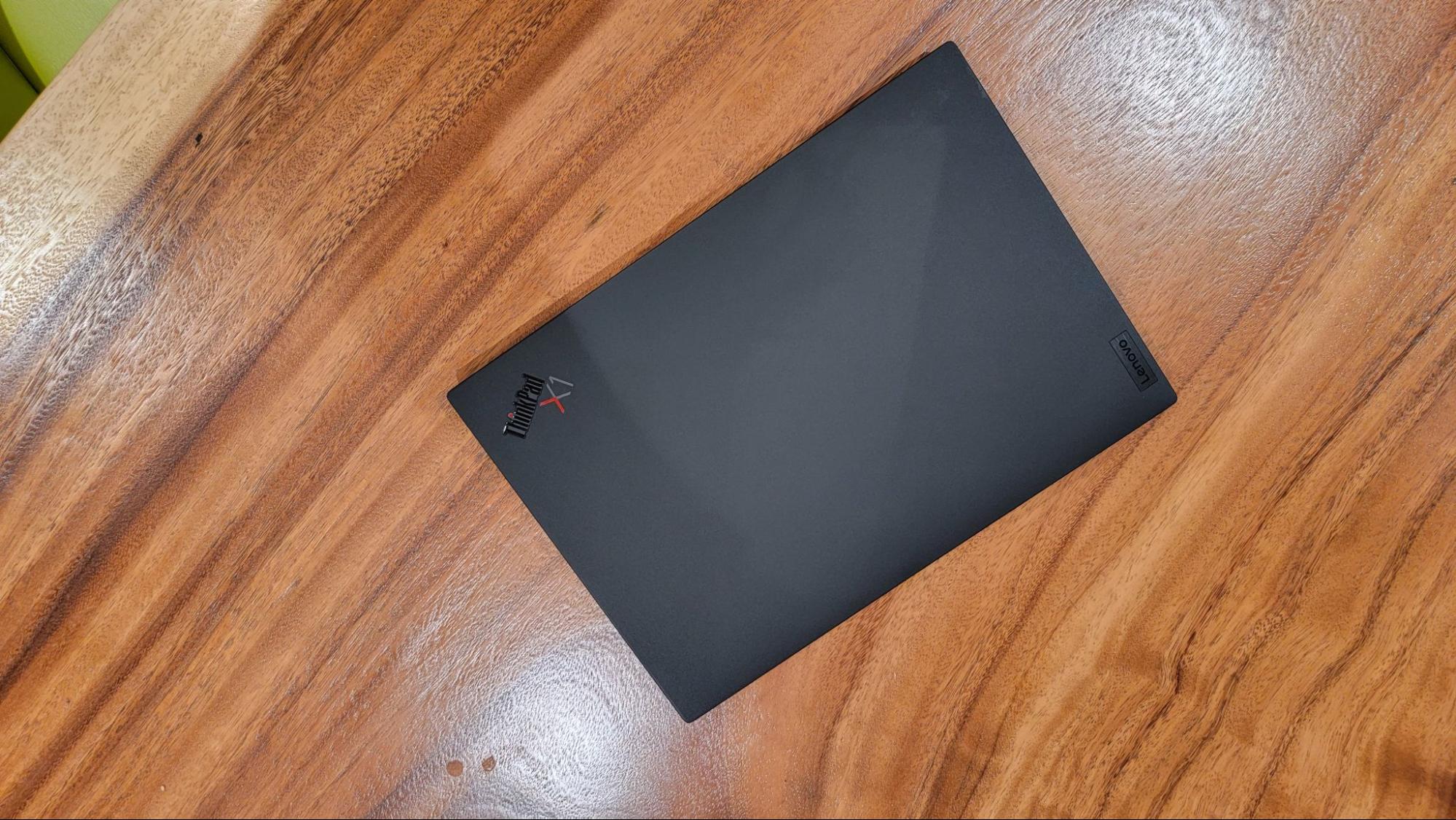
With a starting weight of just 2.48 pounds (1.12 kg) , the ThinkPad X1 Carbon remains one of the lightest 14-inch laptops on the market and is even svelter than 13-inch competitors such as the MacBook Air (2.7 pounds), and Lenovo’s own ThinkPad Z13 (2.78 pounds). Asus’s ZenBook S 13 is just 0.05 pounds lighter, but HP’s Elite Dragonfly is a feathery 2.2 pounds.
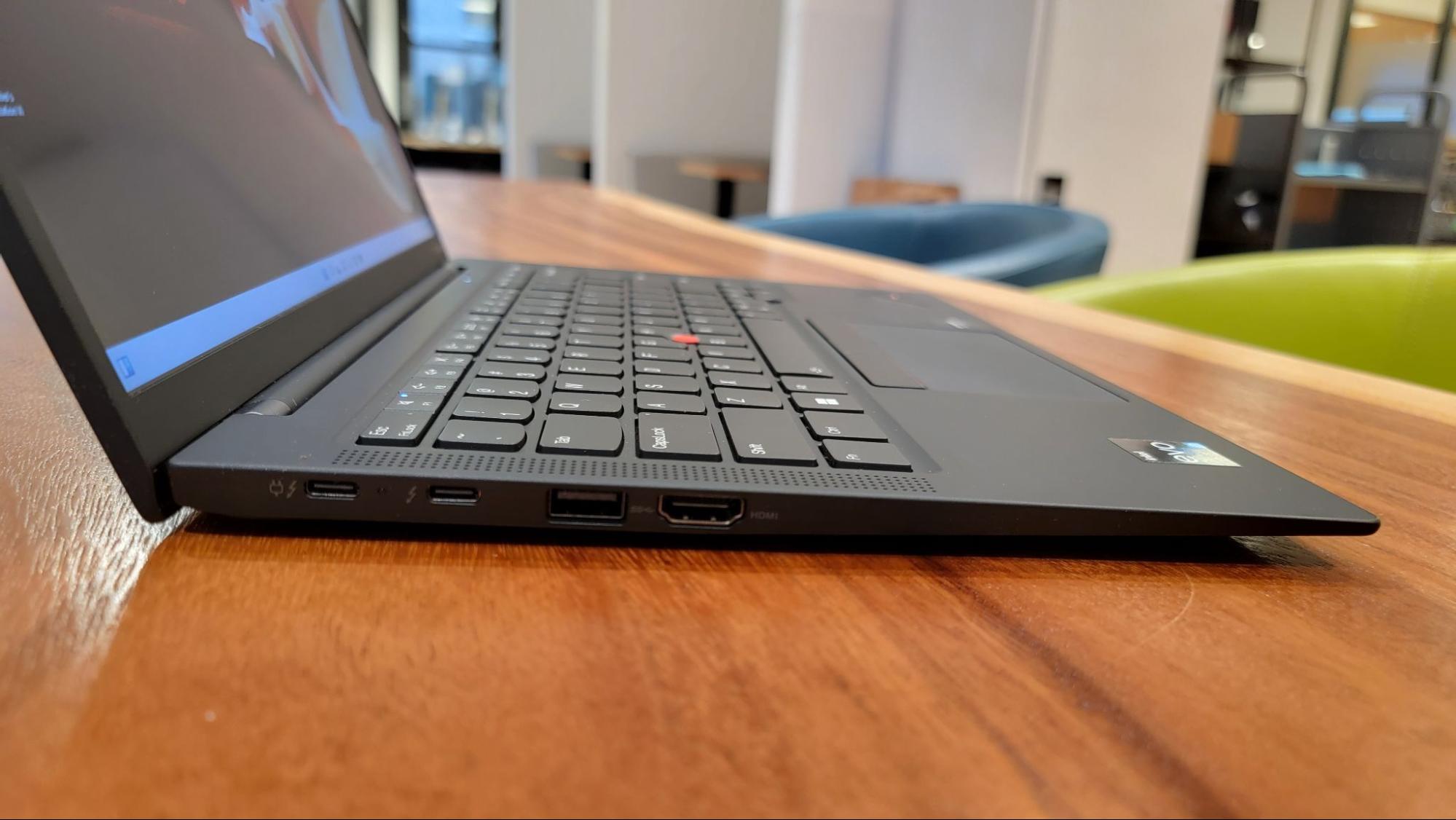
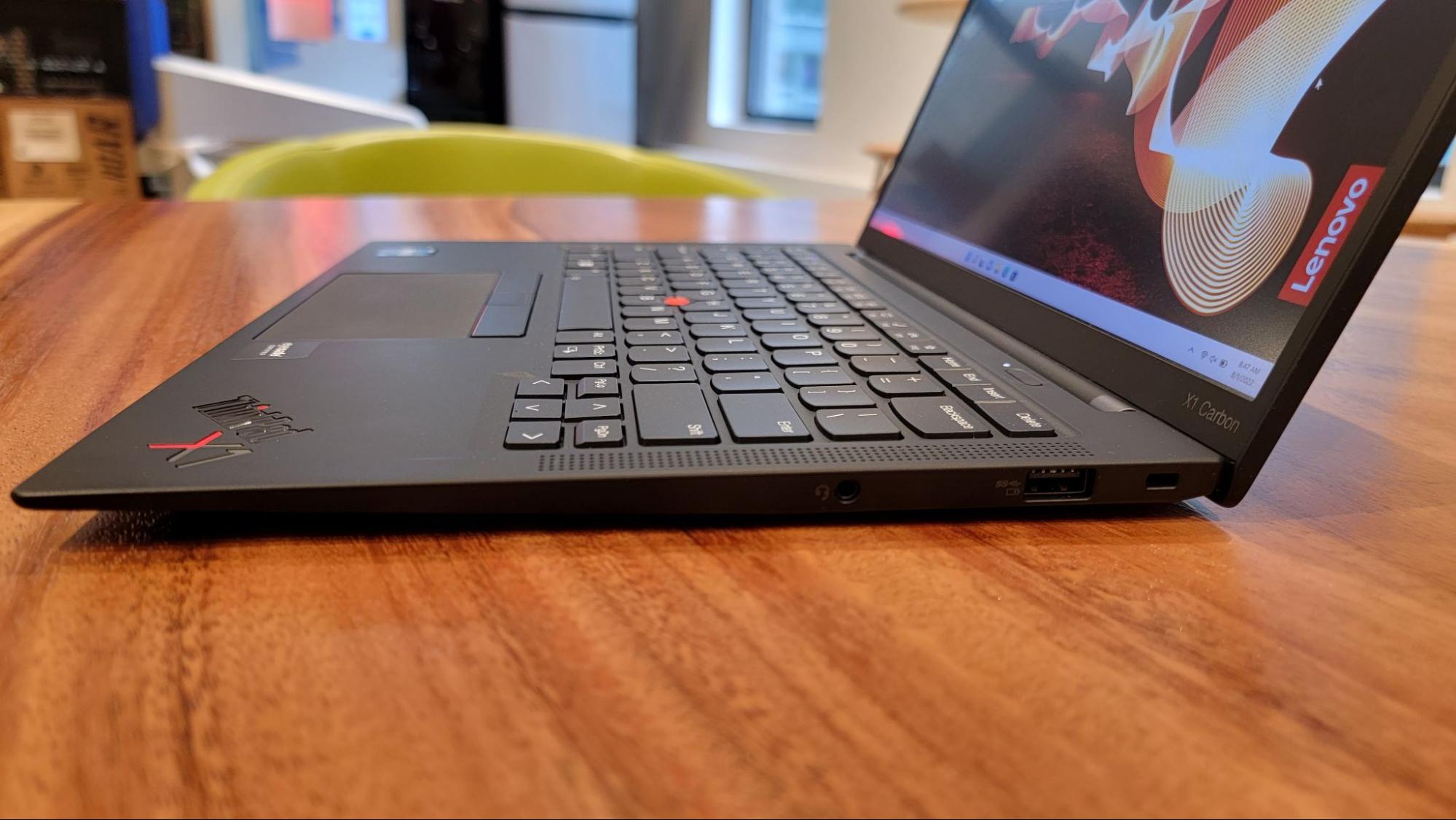
The X1 Carbon is a mere 12.43 x 8.76 inches (width x ddpth) and just 0.60 inches thick. Considering the thinness, Lenovo does a great job of fitting in all the major ports you need, including two USB Type-A ports, a full-size HDMI connector and dual Thunderbolt 4 / USB-C connections. HP’s 0.64-inch thick Dragonfly packs in a single Type-A port, only thanks to a drop-jaw hinge and other competitors such as the 0.59-inch thick ZenBook, the 0.44-inch thick MacBook and the 0.55-inch thick ThinkPad Z13 don’t have any Type-A ports at all.
Lenovo ThinkPad X1 Carbon (Gen 10) Specs
| CPU | Intel Core i7-1260P |
| Graphics | Intel UHD Graphics |
| Memory | 16GB DDR5-5200 |
| Storage | 512GB PCIe SSD |
| Display | 14-inch, 1920 x 1200 touch screen, 16:10 aspect ratio |
| Networking | Intel AX211 W-iF- 6E, Bluetooth 5.2 |
| Ports | 2x Thunderbolt 4 (USB-C), 2x USB-A 3.2 Gen 1, 3.5 mm headphone jack, HDMI 2.0b |
| Camera | 1080p with privacy shutter |
| Battery | 57 Whr |
| Power Adapter | 65W (USB-C) |
| Operating System | Windows 11 Pro |
| Dimensions | 12.4 x 8.8 x 0.6 inches (315.6 x 222.5 x 15.4 mm) |
| Weight | 2.48 pounds (1.12 kg) |
| Price (as configured) | $1,564 |
Productivity Performance on the Lenovo ThinkPad X1 Carbon (Gen 10)

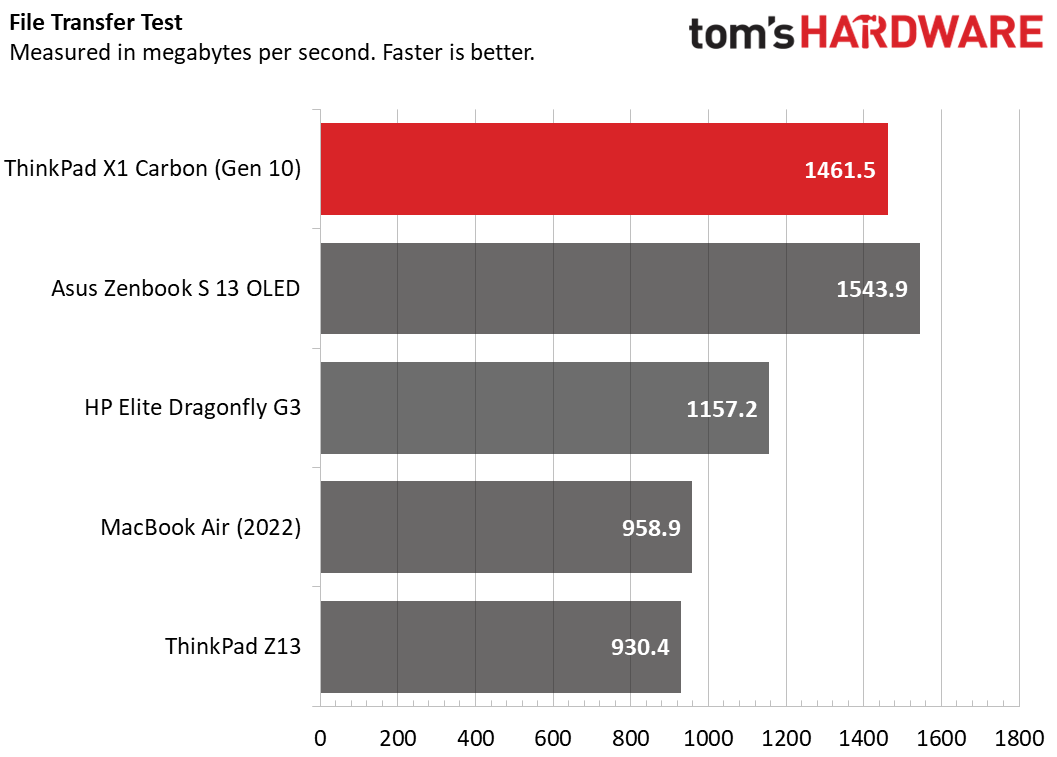


Our review configuration of the ThinkPad X1 Carbon came configured with an Intel Core i7-1260P CPU, 16GB of RAM and a 512GB SSD. With these kinds of specs, it almost goes without saying that everyday tasks such as web browsing, watching videos and editing documents are smooth and seamless. With 16GB of RAM, you can do a lot of multitasking too.
However, Lenovo made a polarizing choice with the processor. While prior Lenovo ThinkPad X1 Carbons used 15-watt U-series CPUs to save power, this X1 Carbon comes with a 28-watt, P-series processor that has had its TDP configured down to 20 watts. The 12-core processor, which has four performance cores and eight efficiency cores, promises better performance while using just a little more power, but, on our tests, the X1 Carbon didn’t always outpace competitors with 15-watt processors and its battery life (more on that later) is much lower.
Get Tom's Hardware's best news and in-depth reviews, straight to your inbox.
On Geekbench 5.4, a synthetic benchmark that measures overall processing prowess, the X1 Carbon returned a single-core score of 1,644 and a multi-core mark of 8,159. That puts it squarely in the middle of the pack amongst its competitors. The MacBook Air and its M2 processor scored 1,932 and 8,919 while Lenovo’s ThinkPad Z13 and its AMD Ryzen 7 Pro 6850U processor, which has eight full-powered cores, delivered a higher multi-core score of 8,768 paired with a lower single-core mark of 1,501. The ZenBook S 13 OLED, which has a Ryzen 7 6800U, scored 1,517 and 7,606 while the Core i7-1265U-powered HP Elite Dragonfly G3 effectively tied the ThinkPad X1 Carbon in single-core, hitting 1,647 while falling behind in multi-core with 6,501.
The 512GB PCIe SSD was pretty speedy, copying 25GB of files at a rate of 1,461.5 MBps. That’s ahead of the MacBook Air (958.9 MBps), the ThinkPad Z13 (930.4 MBps) and the HP Elite Dragonfly (1,157.2 MBps). Only the Asus ZenBook S 13 OLED (1,543.9 MBps) was slightly ahead.
The X1 Carbon (Gen 10) took 12 minutes and 33 seconds to transcode a 4K video into 1080p. That’s a lot slower than any of its non-Intel-powered competitors as the ThinkPad Z13 (7:09), MacBook Air (7:52) and Zenbook S 13 OLED (8:15) were much quicker. However, the Dragonfly (13:09) took a little longer to finish.
To see how well the Lenovo ThinkPad X1 Carbon (Gen 10) performs over time, we launched Cinebench R23 for 20 consecutive runs. After starting at a high score of 8,078, the laptop settled into the 6,400 to 6,800 range with an overall average of 6,633.
During the test, the 1270P’s four performance cores averaged 2.08 GHz while the eight efficiency cores ran at 1.57 GHz. The CPU package temperature averaged 83.4 degrees Celsius. The processor, with its 20-watt TDP, had an average draw of 19.87 watts.
Display on the Lenovo ThinkPad X1 Carbon
The ThinkPad X1 Carbon (Gen 10) is available with a variety of 16:10 aspect ratio panels, with resolutions ranging from 1920 x 1200 up to 3840 x 2400. Our review configuration sported a 1920 x 1200 touch screen which provided bright, sharp images with wide viewing angles and solid color reproduction.
The 16:10 aspect ratio is great for surfing the web or editing documents, because it provides 11 percent more vertical screen real estate than a typical, 16:9 display. That could mean an extra paragraph of text before you need to scroll. However, there will be slightly larger black bars on the top and bottom when you watch movies, all of which have a 16:9 aspect ratio.
When I watched a 1080p trailer for the Netflix show "Wednesday," fine details like the main character’s eye brows or the stripes on a girl’s school uniform were sharp and detailed. Colors like the red of school lockers or the blue of pool water seemed particularly vibrant. And images were easy to see – with barely any washout – at a full 90 degrees to the left or right.
The ThinkPad X1 Carbon’s display registered a luminous 406 nits on our light meter, which is brighter than the HP Elite Dragonfly G3 (370 nits) and the Asus ZenBook S 13 OLED (321 nits). The ThinkPad Z13 is a little brighter at 429 nits while the MacBook Air reaches all the way to 489 nits.
According to our colorimeter, the panel can reproduce a full 106 percent of the sRGB color gamut, but a modest 75.2 percent of the wider, DCI-P3 gamut. Those numbers are pretty good overall and about on-par with the ThinkPad Z13 (107 / 75.8 percent) and MacBook Air (107 / 75.9 percent). The HP Elite Dragonfly (80.2 /113) was a tad better, but the Asus ZenBook S 13 OLED (126 / 89. 3 percent) blew all of the competitors away, thanks to its OLED panel.
Battery Life on the Lenovo ThinkPad X1 Carbon (Gen 10)
Likely because of its high-powered P-series Intel processor, the ThinkPad X1 Carbon 10th Gen has much worse battery life than its competitors and than the prior generation. On our battery test, which involves web surfing and video streaming at 150 nits of brightness, Lenovo’s laptop lasted a mere 8 hours and 48 minutes. That might not sound bad when taken in isolation, but consider that the Gen X1 Carbon (Gen 9) we tested last year — which had the same 1920 x 1200 resolution display but a 15-watt U series processor — endured for 15 hours and 39 minutes. If your daily use is more intensive than our test (you run at full brightness for example) you could find yourself needing to plug in well before the work day is done.
All of the X1 Carbon’s current competitors lasted quite a bit longer on our test. The Intel Core i7-1265U-powered HP Elite Dragonfly G3, AMD Ryzen 7 Pro 6850U-enabled ThinkPad Z13 and M2-sporting MacBook Air all endured for around 14 hours while the Ryzen 7 6800U-enabled ZenBook S 13 quit after 11 hours.
Though it was unavailable originally, Lenovo recently added the option to configure your ThinkPad X1 Carbon with a 15-watt, Intel U-series CPU. We haven’t tested a unit with this processor so we can’t vouch for its battery life, but we expect that it would last significantly longer on a charge.
Keyboard, TrackPoint and Touchpad on the Lenovo ThinkPad X1 Carbon (Gen 10)
The X1 Carbon (Gen 10) has the kind snappy, responsive keyboard that ThinkPads are famous for, but with a slight twist. The keycaps still have the slightly concave surface that makes feeling one’s way around so easy, but they have been squared a bit for what Lenovo says are “cleaner lines.” I liked typing on the more rounded keys of the last-gen model a little better, but these still have plenty of travel and feedback. The soft-touch material on the palm rest kept my wrists feeling comfortable as I clacked my way to 97 words-per-minute and a 4 percent error rate – a typical score for me – on the 10fastfingers typing test.
Like pretty much every ThinkPad, the X1 Carbon (Gen 10) has two different pointing devices: a glass touchpad and a TrackPoint pointing stick. As always, the TrackPoint allowed me to navigate around the desktop with great precision and without ever having to lift my hands off of the home row. If, like me, you appreciate the time and unnecessary movement you save by using a pointing stick, you’ll really appreciate this laptop.
However, if you don’t like the little red nub, you can ignore it and use the 4.3 x 2.3-inch glass touchpad. In my tests, it also provided very accurate movements and responded flawlessly to all the multitouch gestures I tried, including three-finger swipe and pinch-to-zoom. I really appreciated the smooth surface, which gave me just enough friction to keep my finger from sliding around.
Audio on on the Lenovo ThinkPad X1 Carbon (Gen 10)
The four-speaker audio system is accurate and loud, though not overly rich. When I listened to AC/DC’s “Back in Black,” the guitars, vocals and drums were all clear, with minimal distortion and just a slight hint of tinniness. However, I didn’t detect much separation of sound as all the instruments sounded like they were coming from one place.
At maximum volume, the sound was loud enough to fill a medium-sized room. So, if you’re planning to use the X1 Carbon (Gen 10) for a conference call or a demo with other people sitting around you, they should all be able to hear it.
Lenovo’s Commercial Vantage utility allows you to choose among different audio profiles, including Music, Voice and Movie. I found that the music output was actually clearest and most accurate in Dynamic mode, which chooses the best profile for you. The Music mode seemed a little muffled.
Upgradeability of the Lenovo ThinkPad X1 Carbon (Gen 10)
You can upgrade the M.2 2080 SSD on the ThinkPad X1 (Gen 10) but not the RAM, which is soldered to the motherboard. To get to the SSD, I needed to remove the bottom cover which has five captive, philips head screws. Unfortunately, after they were loosened, it was really difficult to pry the cover off, even with a spudger.
Once I got the back cover off, I found the SSD underneath a copper heatsink, with one screw holding it in place. There’s also a WWAN slot for the optional 5G module, but there were no antenna wires on our unit, suggesting that, even if you bought a card, you wouldn’t be able to use it. Putting the cover back on was nearly as difficult as taking it off so I don’t recommend doing an upgrade unless you really need a higher-capacity SSD than the laptop came with.
Heat on the Lenovo ThinkPad X1 Carbon (Gen 10)
The ThinkPad X1 Carbon (Gen 10) has air in-take holes under the keys to help keep the system’s thermals under control and, indeed, the skin temperature stayed cool during our testing. When balancing the laptop on my lap and typing on it, the system never felt warm.
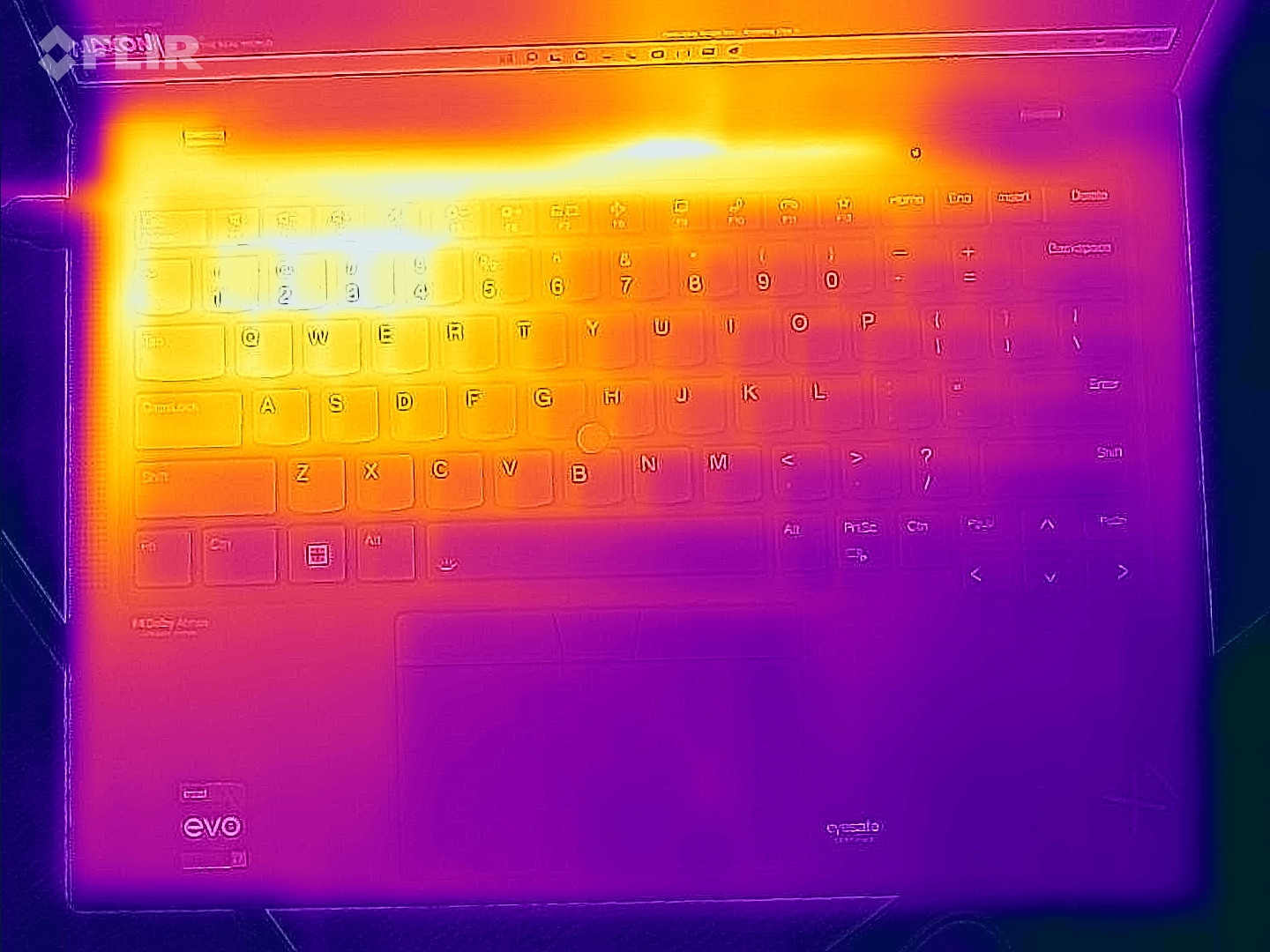
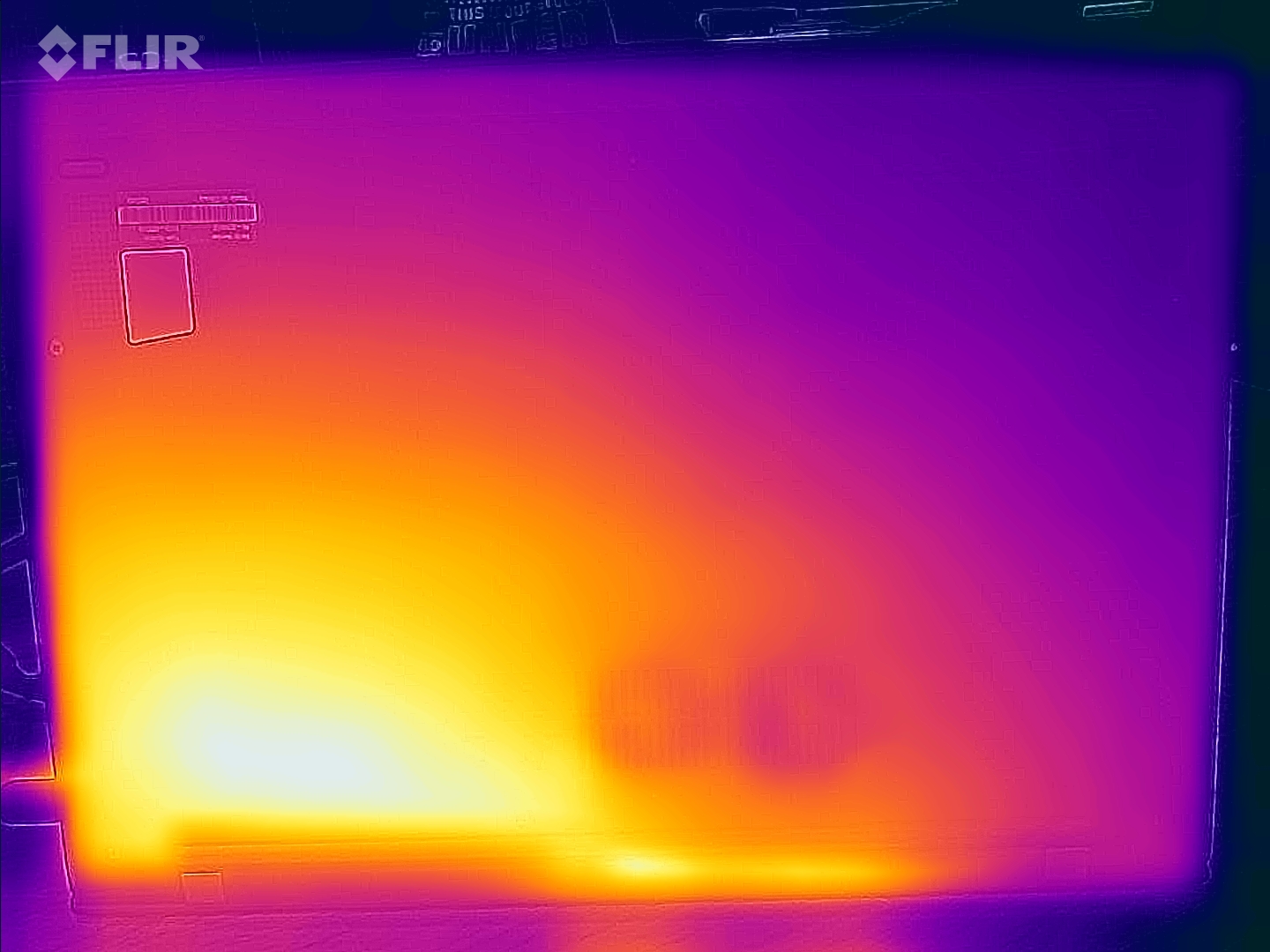
While running our Cinebench stress test, the keyboard measured 92.5 degrees Fahrenheit (33.2 degrees Celsius) while the touchpad was chilly 80.4 F (26.9 C). The warmest area was the back bottom near the vents, which hit 108.1 F (42.3 C), but you likely wouldn’t be touching that area.
Webcam on the Lenovo ThinkPad X1 Carbon (Gen 10)
The ThinkPad X1 Carbon (Gen 10) features a 1080p webcam, a nice step up from the 720p cameras we saw on prior-gen ThinkPads and still see on most laptops. While it might not be quite as good as the best webcams you can plug in, the X1 Carbon’s sensor is really good. When I shot a selfie in indoor light, colors like the blue in my shirt and the turquoise in my glasses looked quite accurate. The image was sharp enough that the individual hairs on my beard were easy to make out. In low-light most details of my face were clear and, in a pitch-black room, my features were still visible. For when you don't want to be seen, Lenovo includes a security shutter to cover the camera.


Lenovo offers the ThinkPad X1 Carbon with optional infrared camera for face recognition. The company also touts a computer-vision based feature that can lock the computer when you move away from it and unlock it when you come back. Unfortunately, we were unable to test the computer vision, because our review unit didn’t have the IR cameras.
Software and Warranty on the Lenovo ThinkPad X1 Carbon (Gen 10)
Lenovo packs the ThinkPad X1 Carbon with very few preloads. Lenovo Commercial Vantage, the main utility, allows you to exert fine control over all the key aspects of the system, including the audio, the camera and the power profile while also helping you update the drivers and watch the battery health.
Lenovo Quick Clean disables the built-in keyboard for a configurable amount of time (ex: 2 minutes, 5 minutes) so you can wipe it down.
Lenovo View offers video enhancements that promise to improve the webcam output. Dolby Access provides another way to switch among sound profiles.
Windows 11 comes with a small pile of crapware, including Disney Plus Spotify. Clipchamp video editor, Adobe Express, TikTok and Amazon Prime Video all have icons in the start menu, which cause the programs to download and install the first time you click them.
Lenovo backs the X1 Carbon with a standard one year warranty on parts and labor but offers the ability to extend that term up to five years and add extras such as on-site service and accidental damage protection at a cost.
Lenovo ThinkPad X1 Carbon (Gen 10) Configurations
Like other ThinkPads, the X1 Carbon (Gen 10) is available in a wide variety of configurations and can even be configured-to-order if you purchase it from Lenovo.com. Our $1,564 review configuration came with an Intel Core i7-1260P CPU, 16GB of DDR5 RAM, a 512GB SSD and a 1920 x 1200 touch screen. The $1,319 base model has a Core i5-1240P CPU, 8GB of RAM, a 256GB SSD and a 1920 x 1200, non-touch display.
If you configure-to-order, you can choose among screens ranging from a 1920 x 1200 non-touch panel to a 2880 x 1800 OLED display to a 3840 x 2400 touch screen that promises to cover 100 percent of the DCI-P3 color gamut.
There are a variety of Core i5 and Core i7 P-series processors and there are also two configurations with a Core i5-1235U CPU. If you care about battery life, go for the U series processor.
You can have 8, 16 or 32GB of DDR5 RAM, but if you want the 32GB capacity, you’ll need to choose one of the more expensive Core i7 processors. You can also opt for up to a 2TB NVMe SSD.
If you want an integrated 4G or 5G modem, you can spend $200 to $300 extra for that add-on. You also have a choice of a regular webcam, one with IR face detection or one with computer vision capabilities that are supposed to unlock the PC when you’re detected in front of it.
If you are purchasing direct from the company's website, this up-to-date list of current Lenovo coupons may provide savings.
Bottom Line
The ThinkPad X1 Carbon (Gen 10) has almost all of the goodies you need to be productive whether you’re sitting on the couch or in coach. It has a brilliant display, a keyboard that makes typing a joy, a helpful navigation combo, all the ports you need and a really strong webcam. With its lightweight chassis and soft-touch surfaces, the X1 Carbon just feels perfect on the lap.
But something is missing. You don’t buy a 2.5-pound laptop like the ThinkPad X1 Carbon to keep it plugged in most of the time and the 8 to 9 hours of battery life we got on our test could turn into 6 or 7 hours if you pump the brightness up higher than we do. When competitors are lasting for 14 hours on the same test, the Carbon’s short endurance stands out in a bad way. The modest performance bump you get with the higher-wattage, P-series processor just isn’t worth it. Perhaps, a configuration with a U-series CPU would bring the endurance closer to the 15 hours last year’s model got, but we haven’t tested with that processor, which just became available.
If you’re looking for a business laptop that offers fantastic battery life and a beautiful screen in an even lighter package, consider HP’s Elite Dragonfly G3. If you like Lenovo’s keyboards and aesthetics, the ThinkPad Z13 is a strong contender that lasts all-day on a charge. However, if you want a great productivity experience and don’t need to be unplugged for a long trip, the X1 Carbon is for you.
Avram Piltch is Managing Editor: Special Projects. When he's not playing with the latest gadgets at work or putting on VR helmets at trade shows, you'll find him rooting his phone, taking apart his PC, or coding plugins. With his technical knowledge and passion for testing, Avram developed many real-world benchmarks, including our laptop battery test.
